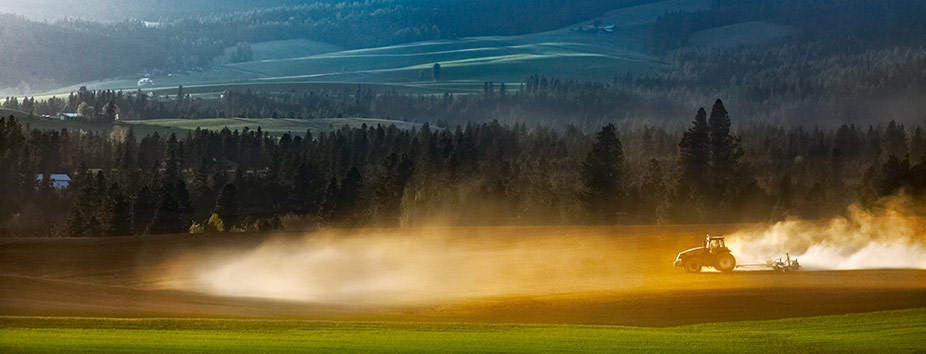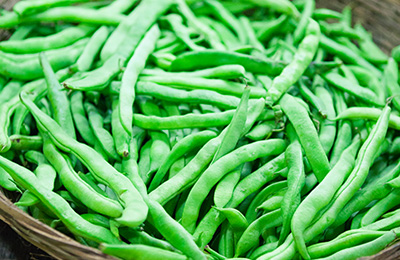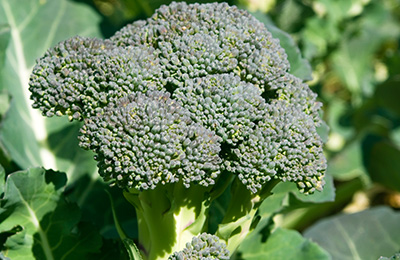Across the country

Catch up on the news for Australia's strengthening agriculture industries.

Catch up on the news for Australia's strengthening agriculture industries.

Exports of Australian fresh beans have hit a record high, according to figures released in November 2015 by the ABS and sourced by AUSVEG from the Global Trade Atlas (GTA) database.
According to AUSVEG CEO Richard Mulcahy, the export market for Australian fresh beans “has experienced an upward trend over the past four years, with an overall increase in value of 52.4 per cent since 2011–12”.
In 2014–15 the market was valued at more than $5.4 million, with New Zealand, our largest fresh bean export market, taking 98.4 per cent of the total.
Currently, Australia’s fresh bean export market is more than 40 times the value of its frozen bean export market. The bean boom reflects a broader trend, with exports of Aussie vegetables showing “considerable strength”, Mulcahy says. “Overall, Australia’s vegetable export market has grown dramatically over the past three years.”
GTA figures show it was worth more than $125 million during January to August 2015—up by more than 10 per cent on the same period last year.
In 2015 Australia’s cotton industry faced “significant challenges”, says Cotton Australia CEO Adam Kay. “Growers in some areas faced water shortages, which resulted in a reduction in the area planted and total production.
However, the outlook for the current season is a little more positive, particularly given recent rains in northern NSW and southern Queensland.”
According to DAFF’s latest ‘Australian crop report’, the area planted to cotton is expected to rise by 52 per cent from last season’s 196,698ha to 300,000ha in 2015–16, driven by a forecast increase of 100,000ha in dry land cotton plantings.
The area planted to irrigated cotton is set to increase 2 per cent to 200,000ha, due largely to increased storage levels in dams serving cotton-growing regions. Production is forecast to increase by 11 per cent to 560,000t of cotton lint and about 792,000t of cottonseed.
In 2014–15 the export value of Australian cotton was $1.1 billion, making Australia the world’s third-largest exporter after the US and India. In 2015–16 the export value of Australia’s cotton is forecast to rise to $1.2 billion.
 Growing domestic and global demand for organic products is driving exceptional growth in Australia’s organics industry.
Growing domestic and global demand for organic products is driving exceptional growth in Australia’s organics industry.
According to Australian Organic’s latest report, ‘Australian Organic Market Report 2014’, our organics sector was worth $1.72 billion in retail sales and exports in 2014—a compound annual growth rate of 15.4 per cent since 2009.
Dairy was our most valuable organic category from 2011 to 2014, commanding 22.3 per cent of total organic farmgate sales in 2014, with farmgate value nearing $114 million (up from $29 million in 2011) and retail sales of $325 million.
Organic Aussie beef saw compound growth of 127 per cent over the same period, with the total value reaching $198 million in 2014. Wine grape production increased by 120 per cent, taking the value of organic wine and beverages to $117 million in 2014. Production of organic grains increased 20 per cent.
Fruit and vegetables continue to be the organic products that Australians buy most often, with the sector worth $234 million in 2014—almost 12 per cent of the value of our entire organics industry.
Data from the Wine Australia-funded ABS ‘Vineyards Census 2014–15’ (October 2015) shows that although vineyard plantings across Australia’s 65 wine regions dropped by 13,375ha over the three years since 2012—primarily due to less plantings of chardonnay grapes—some regions bucked the trend.
In the Murray Darling/Swan Hill region, plantings of semillon grapes were up 10 per cent; in Tasmania, plantings rose by 14 per cent.
Reduced plantings were largely offset by higher yields, particularly in warm inland regions; in the Riverina, yields were up 32 per cent on 2012.
Meanwhile, exports look rosy under the China–Australia Free Trade Agreement (ChAFTA). In the year to October 2015, sales of Australian wine to China increased 47 per cent in value to reach a record $313 million, driven by demand for wines at higher price points.
“Under ChAFTA, the current import tariff of 14 per cent for Australian bottled wine and 20 per cent for bulk wine will be phased out over four years, providing a significant boost,” said Tony D’Aloisio AM, President of the Winemakers’ Federation of Australia. Dairy: domestic demand healthy
Higher input costs, hence tighter margins, slowed Australia’s dairy production in the latter half of 2015, and “the wholesale adjustment needed to balance market fundamentals still appears some way off”, cautions Dairy Australia analyst Amy Bellhouse.
The good news? Global dairy commodity prices have risen from recent lows and there’s growing demand, particularly from Asia, for premium dairy-based products such as infant formula and organic UHT milk.
Several factors, including reduced Global Dairy Trade offer volumes and revised lower milk production forecasts for New Zealand, have helped to drive the commodity price rise and improve market sentiment, Bellhouse explains. “It remains to be seen whether supply and demand will rebalance sufficiently for prices to match or exceed ‘average’ levels in the short term,” she says.
Meanwhile, domestic demand for ‘whole’ dairy products, including butter and traditional-style yoghurt—credited with offsetting falling global commodity prices at the farm gate—should provide some solace to cash-strapped farmers.
Higher input costs, hence tighter margins, slowed Australia’s dairy production in the latter half of 2015, and “the wholesale adjustment needed to balance market fundamentals still appears some way off”, cautions Dairy Australia analyst Amy Bellhouse.
The good news? Global dairy commodity prices have risen from recent lows and there’s growing demand, particularly from Asia, for premium dairy-based products such as infant formula and organic UHT milk.
Several factors, including reduced Global Dairy Trade offer volumes and revised lower milk production forecasts for New Zealand, have helped to drive the commodity price rise and improve market sentiment, Bellhouse explains. “It remains to be seen whether supply and demand will rebalance sufficiently for prices to match or exceed ‘average’ levels in the short term,” she says.
Meanwhile, domestic demand for ‘whole’ dairy products, including butter and traditional-style yoghurt—credited with offsetting falling global commodity prices at the farm gate—should provide some solace to cash-strapped farmers.
Beef production, along with exports to the US, will likely slow in 2016 after two years of record highs. However, Aussie producers with cattle to sell should have confidence in the market over the long term, assures
Ben Thomas at Meat & Livestock Australia (MLA), thanks to tightening Australian beef supplies following three years of record slaughter, strong export demand and a weaker Australian dollar.
According to MLA, exports to our largest beef export markets—US, Japan, Korea and China—dominated market share over 2015, with volumes up 24 per cent, steady, up 9 per cent and up 10 per cent, respectively.
At home, a 9 per cent year-on-year increase in weighted average Australian retail beef prices to $16.78/kg (according to ABS) offset the fall in beef consumption. Aussie cattle prices, which achieved record highs in 2015, look buoyant.
Both Eastern and Western Young Cattle Indicators were up significantly to nearly 600c/kg cwt by the end of Q3 2015, while the national average heavy steer (500–600kg C4) saleyard indicator stood at 311c/kg lwt, 35 per cent above its start-of year level, bucking the global trend.